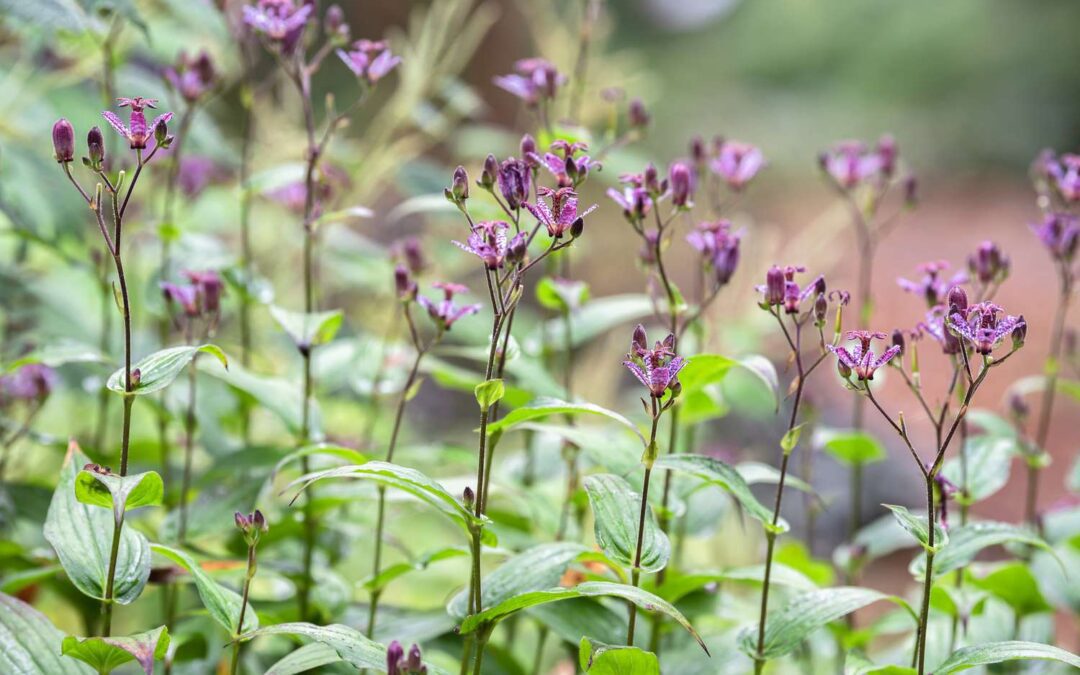It sure has been a sultry summer. Fireflies light the warm evenings and cicadas and crickets sing us to sleep. It’s a fact, sad but true though, that summer is winding down. The season of extended days never seems long enough, but it’s time for gardeners everywhere to reap what they have sown.
Give your garden borders and containers a quick pop of color by replacing tired looking Impatiens and Geraniums with plants that will thrive in the cooler temperatures to come. Zinnias and Celosia are a great option. They’ll provide lots of color through summer’s end and into mid-autumn. And if you’d rather plant perennials, don’t forget about Asters, Toad Lilies and all of the Ornamental Grasses. They’ll be spectacular as they begin to flower.
There are a few garden chores that are best done in late July and early August. Now that they’ve bloomed out, it’s time to divide your German Iris. Dig them up carefully and cut the fans back to a height of 6-inches. Remove any damaged or mushy spots on the rhizomes. Discard any parts of your rhizomes that are affected by Iris Borers. Dip cut ends in a 10% bleach/water solution. Then lay the fans in a shaded spot for a couple of days to so that the cut ends begin to dry. When ready to replant, space your divisions about 6-inches apart and be sure to plant them just below the soil surface with fans pointing up. If you’d like to try some different varieties, mark your calendar that new rhizomes should be in the Garden Center by the end of August.
The Japanese Beetle reports have been low this year, with very few gardeners complaining of heavy infestations. We’ve seen very few at the Garden Center. It seems that most of us, knock on wood, have been passed by. We’re not sure if this year’s dry conditions, combined with the heat, have affected larval development. Or if many gardeners have treated their lawns last year with grubicide. Something to consider for next year. In the meantime, there are several insecticides that you can use to deal with any beetles that you find. Stop in to the Garden Center and we’d be happy to help you find the option that will be best for you.
We’ve had several folks at the Plant Information Desk with samples of Magnolia Scale, one of the newer garden scourges. Watch for sticky patches on leaves and gray, waxy structures on this year’s twigs. Even if your plants have been scale-free so far, we recommend that you treat the crawler stage now with a spray-on systemic insecticide. The Garden Center stocks a couple of choices. And mark your 2024 garden calendar for a late winter application of dormant oil spray.
Keep applying fungicide on any plants affected by Powdery Mildew as long as the weather stays warm and humid. We’ve seen it on Peonies, Lilacs, Phlox and Ninebark. Revitalize and Infuse are two of my favorite treatments.
It’s about this time that we begin to field questions about fall bulbs. Autumn Crocus bulbs will arrive in the Garden Center by mid-August. And if you plant them right away, you’ll most likely get blossoms this fall. Be sure to remember that these plants will send up leaves in the spring, followed by flowers in the autumn. Other fall bulbs, like Daffodils and Allium, will be here right around Labor Day. Who wants to take a guess what the newest tulip color or shape will be this year?
If you find yourself inundated with extra produce, consider dropping it off at the Garden Center’s collection bins. As veg accumulates, we’ll take it over to WayForward Resources, formerly Middleton Outreach Ministry. Their food pantry serves local families and they are really appreciative of your help!

